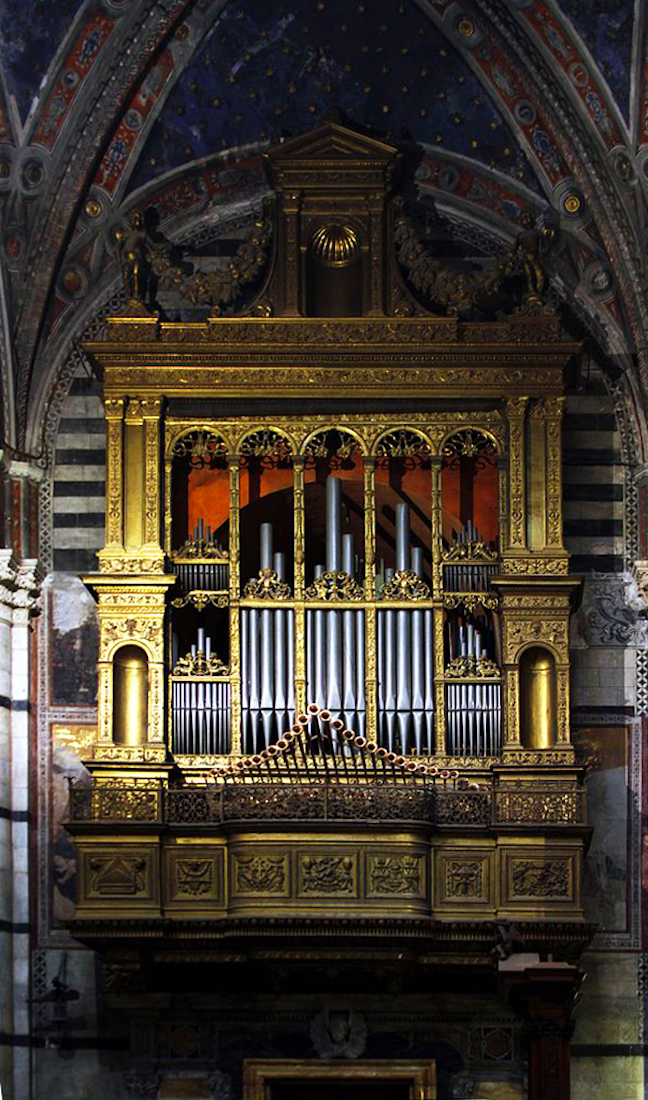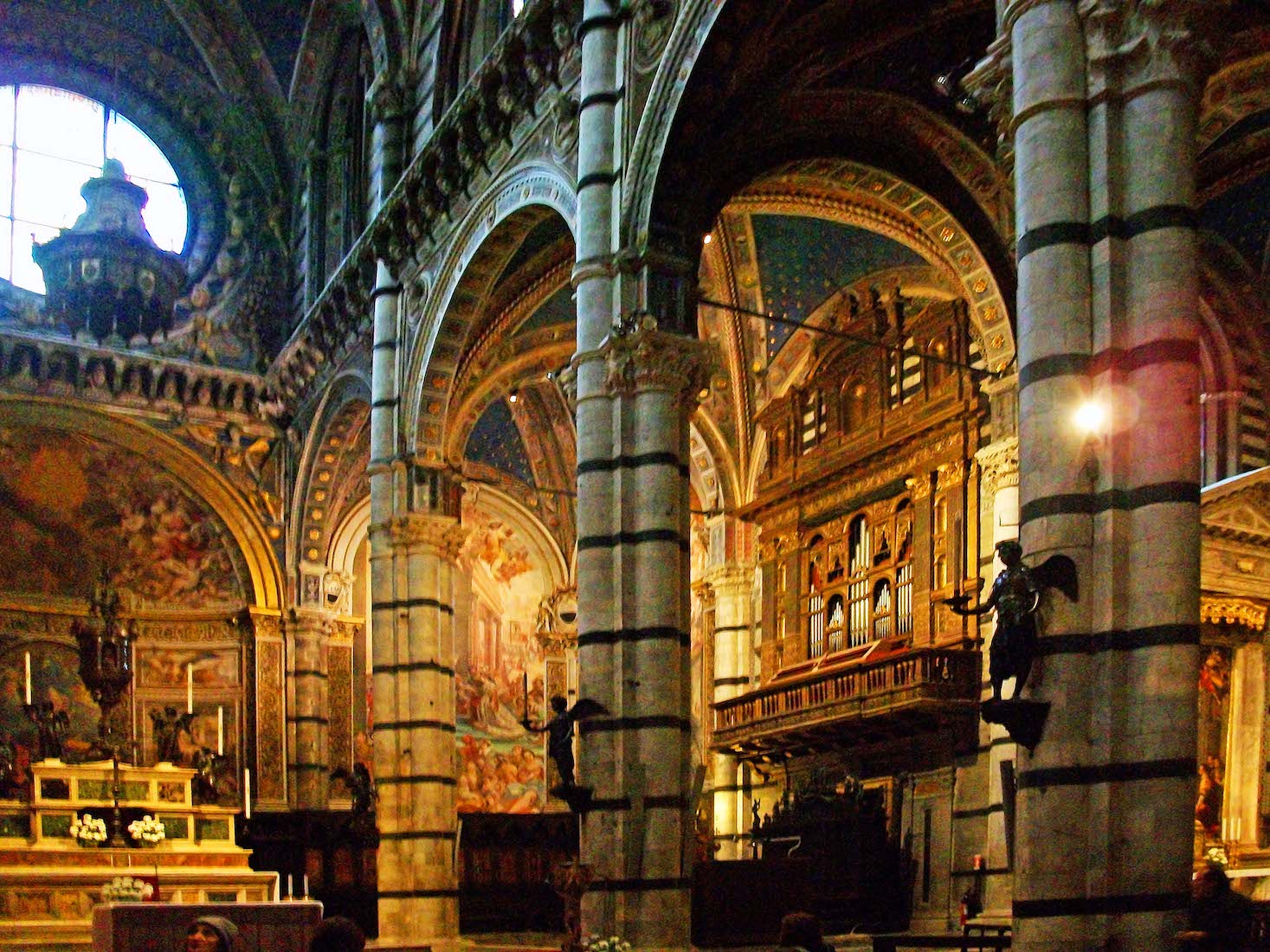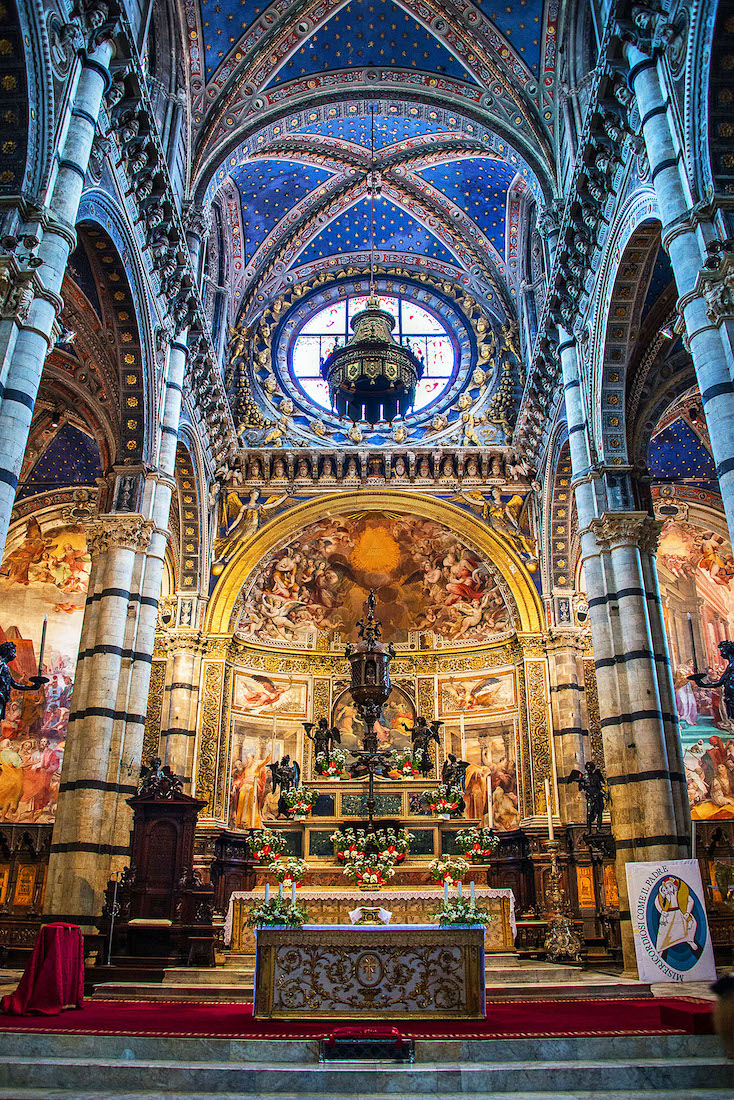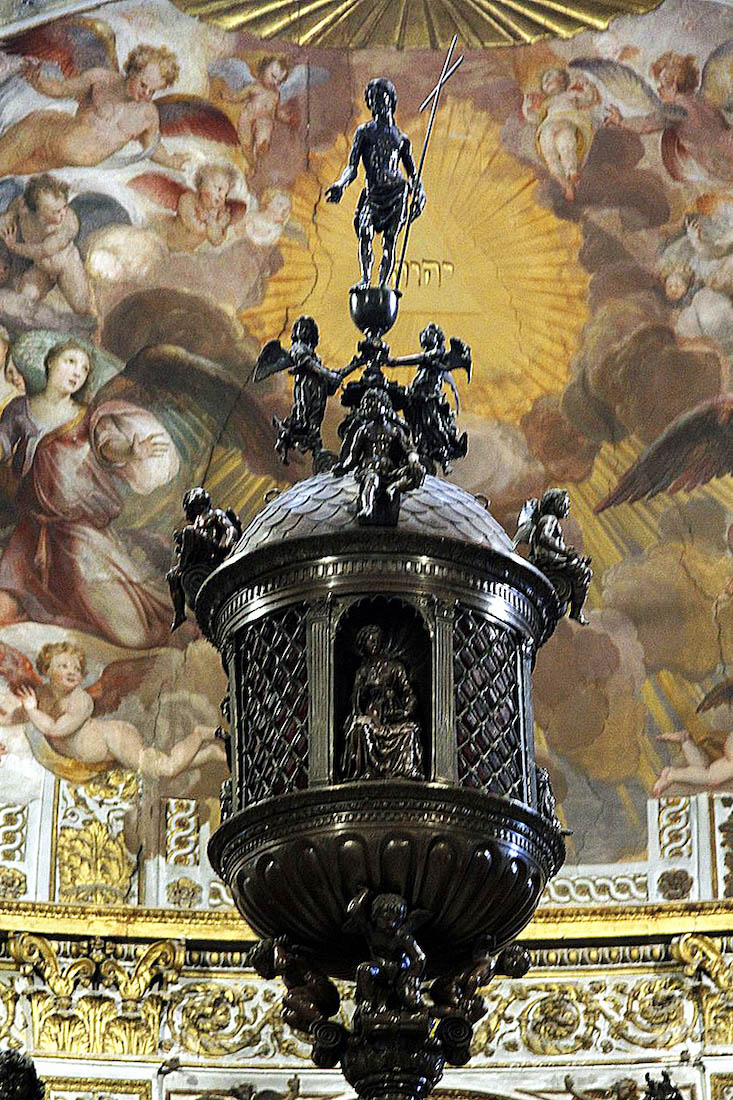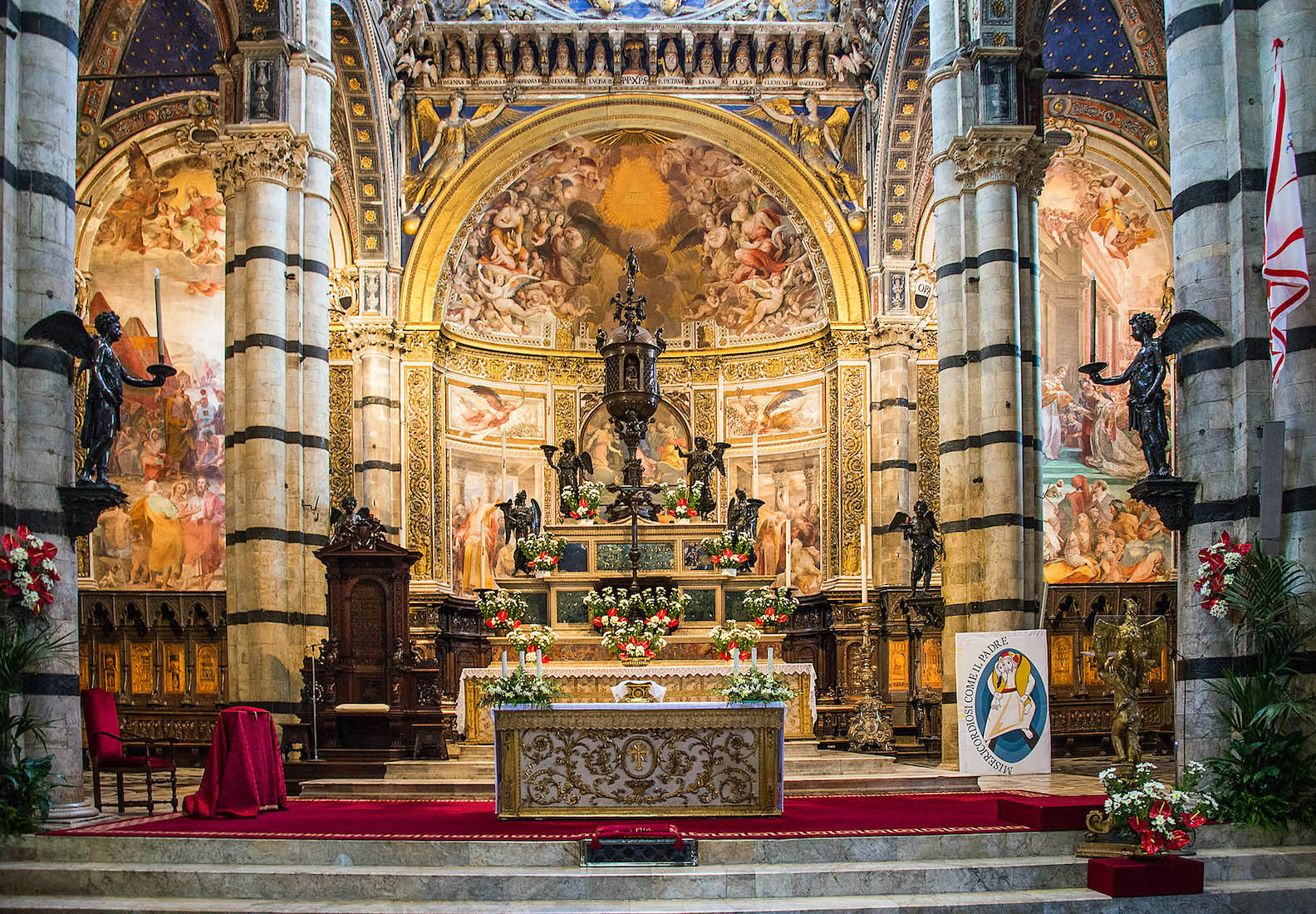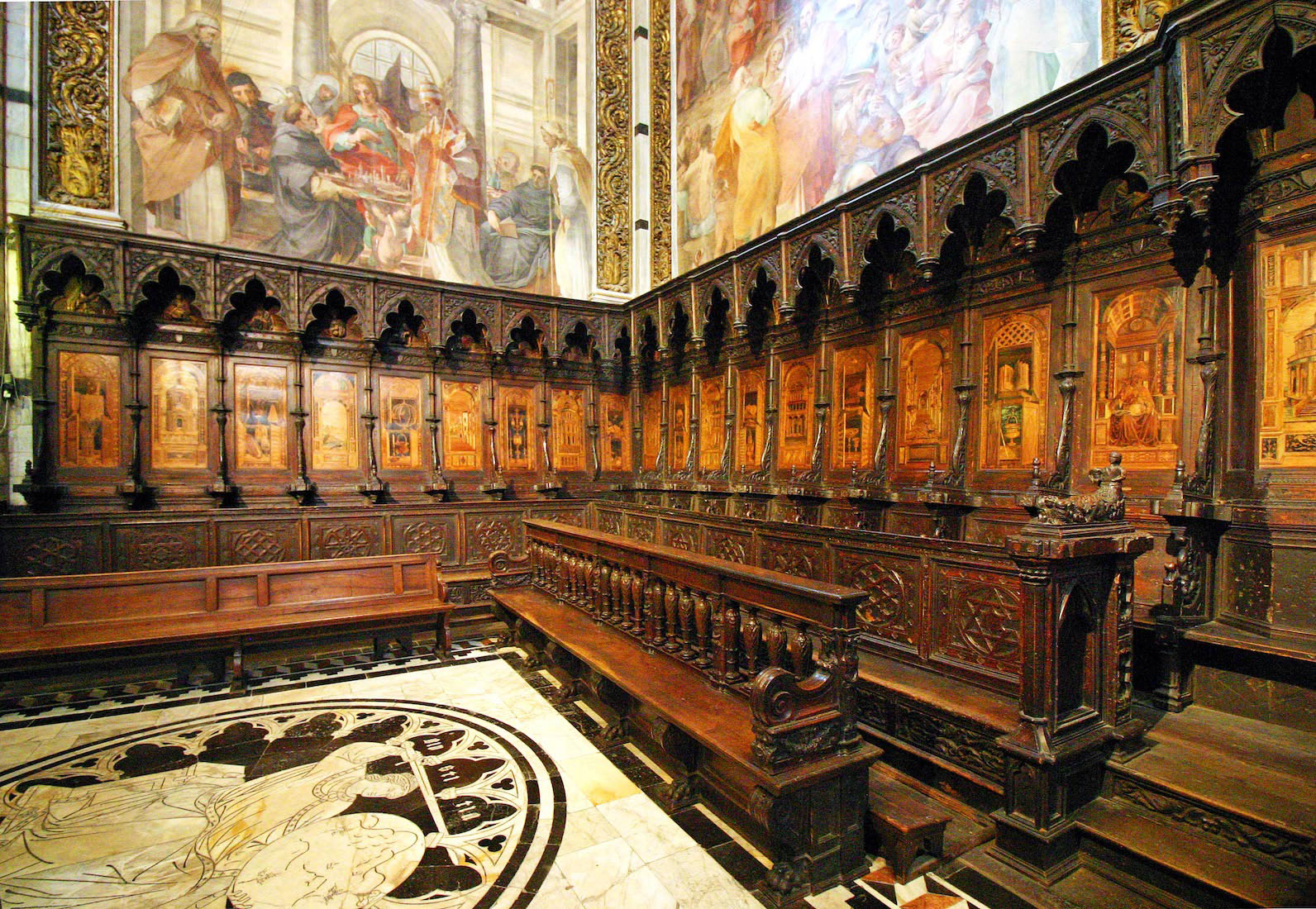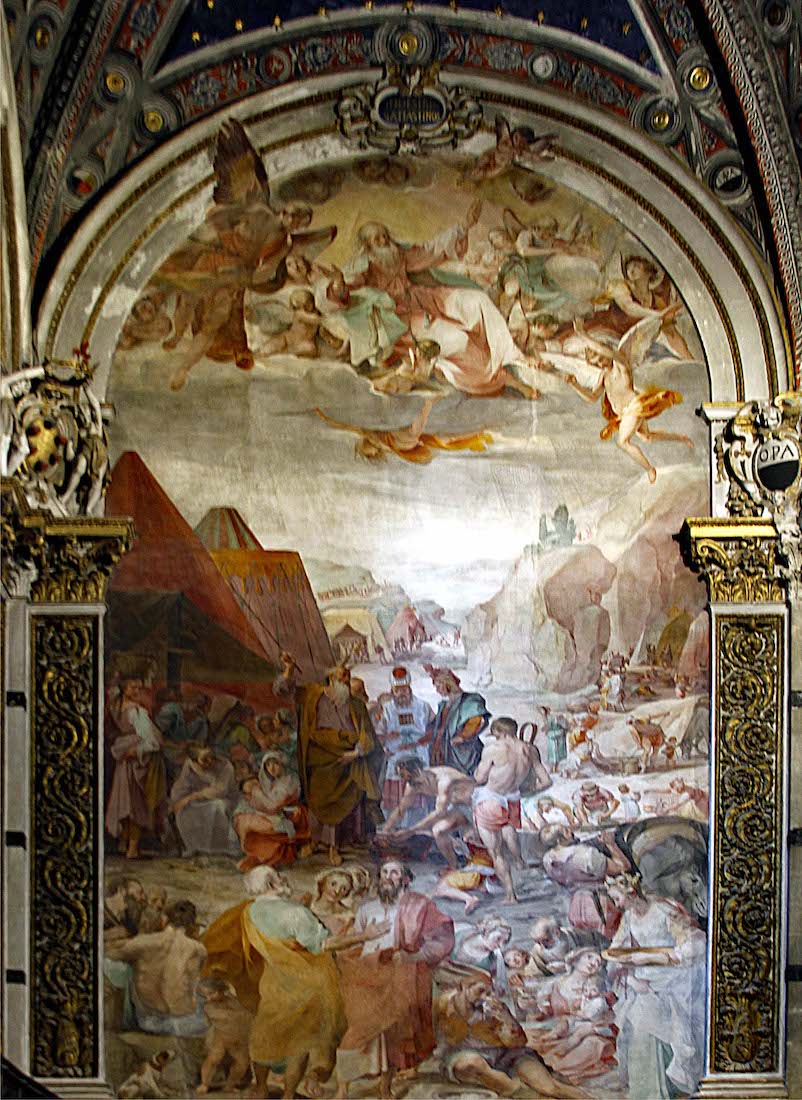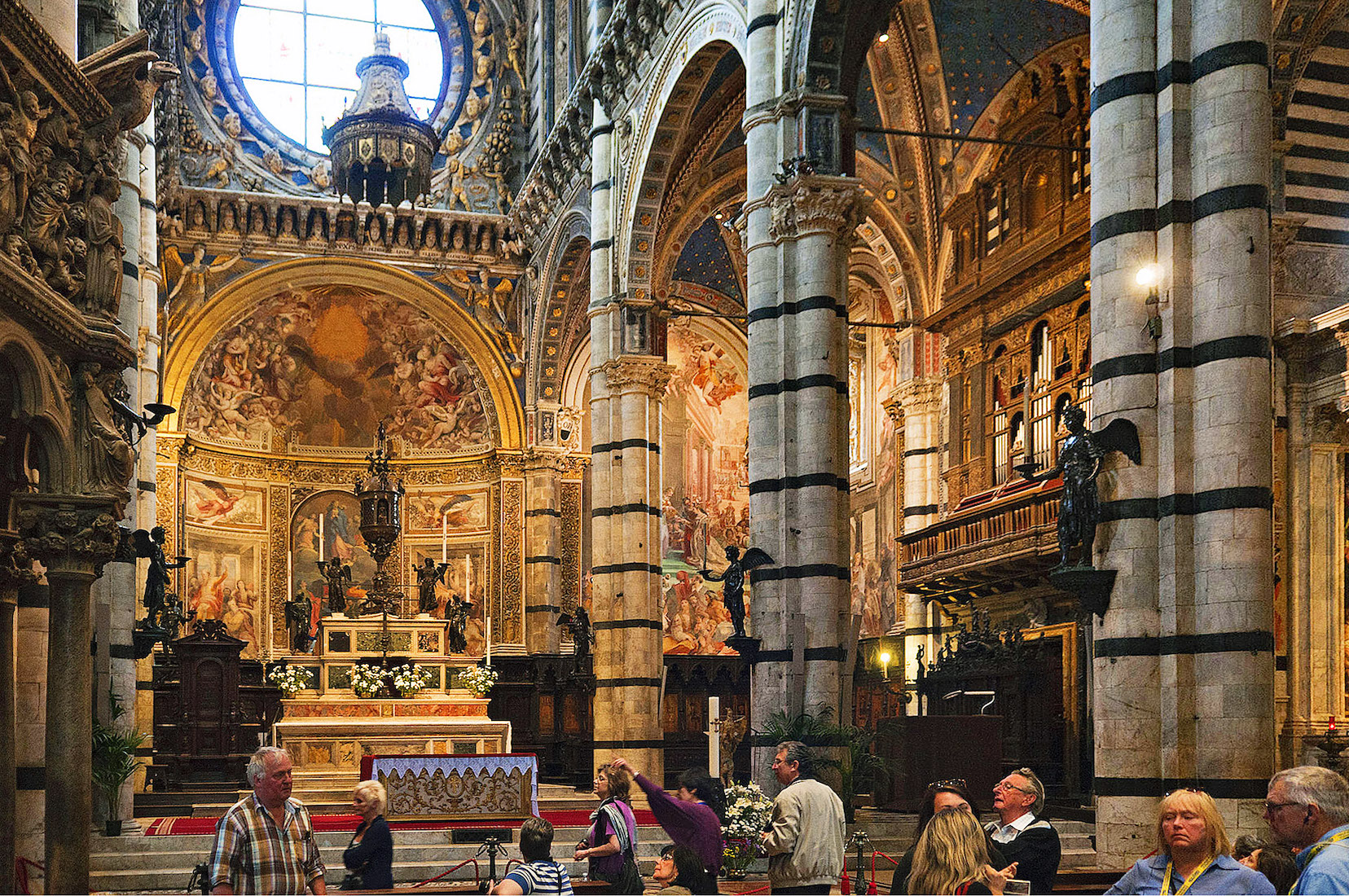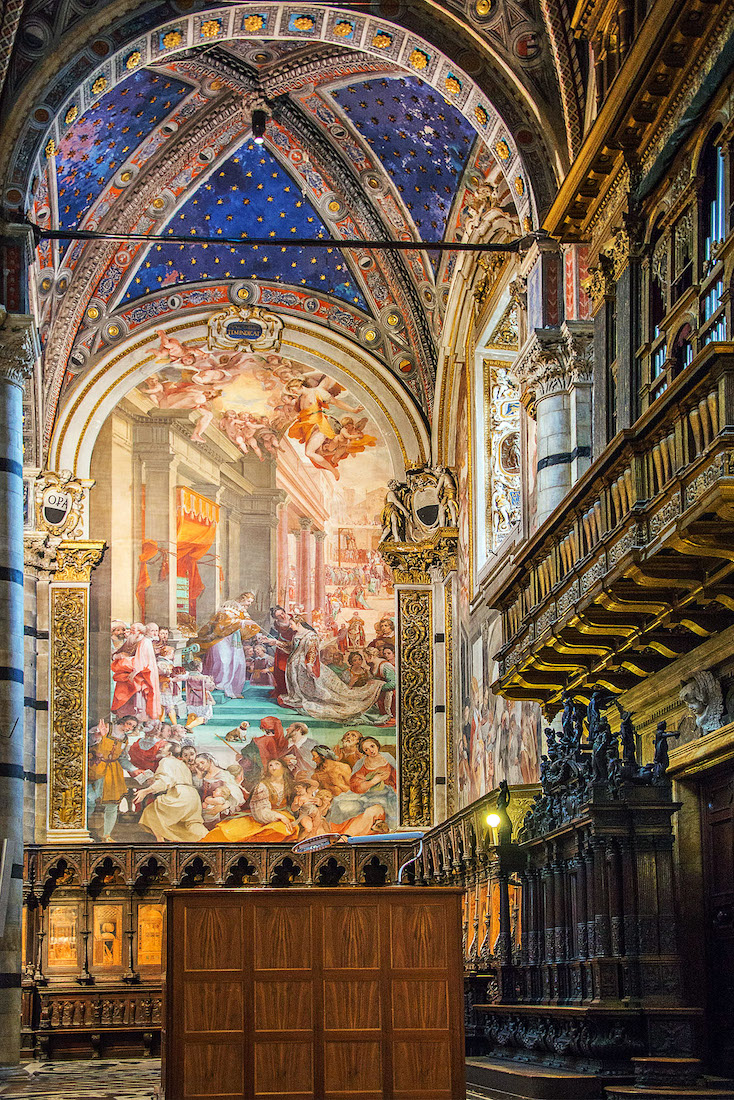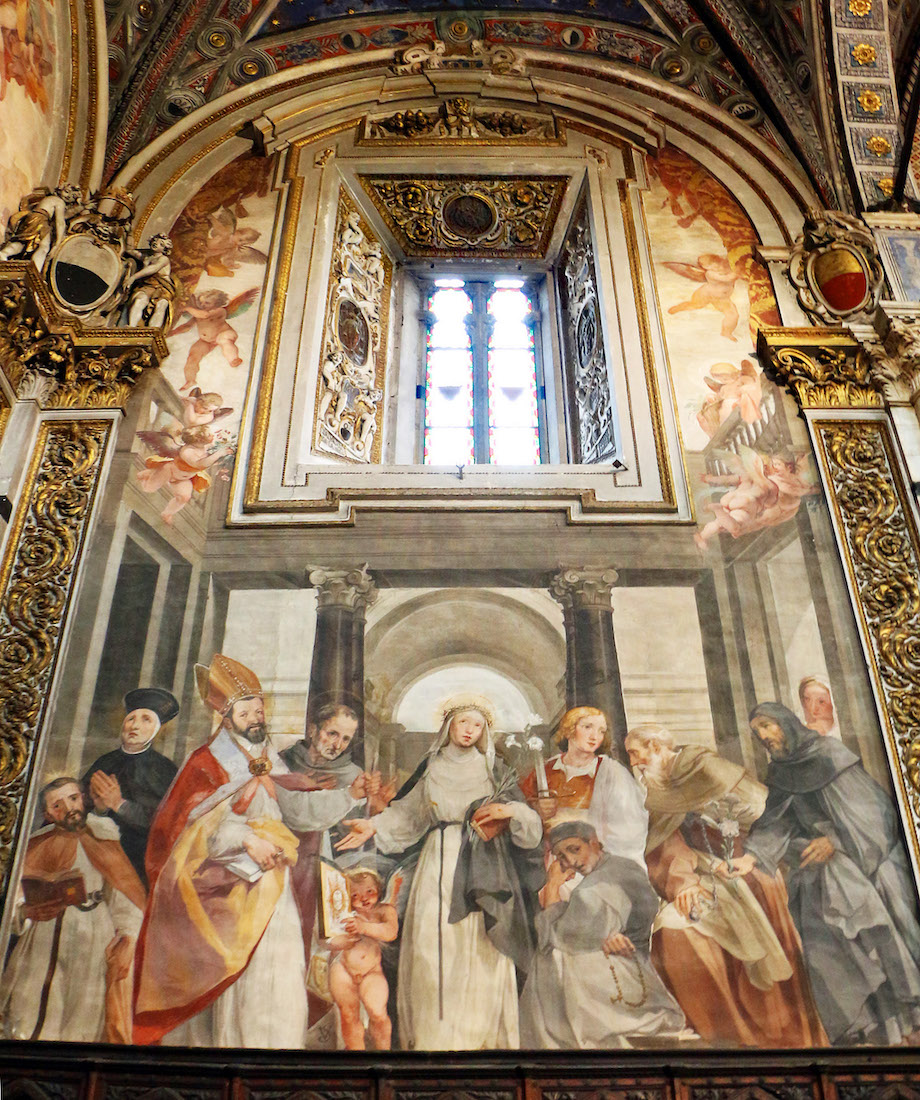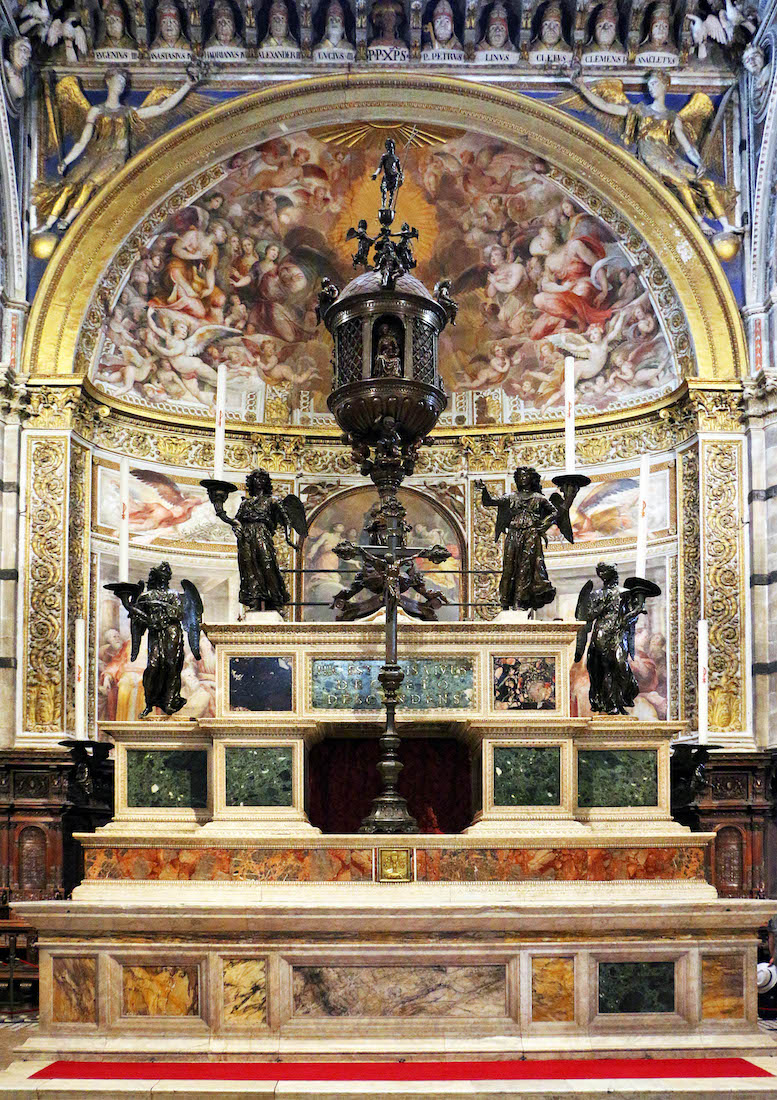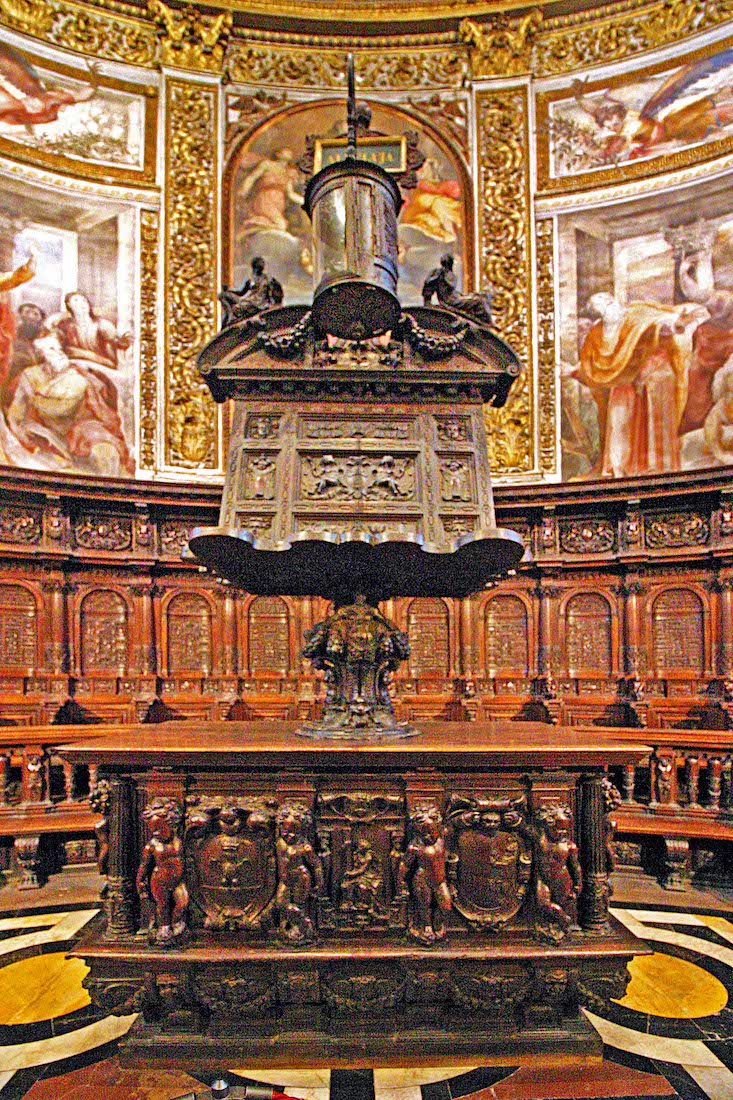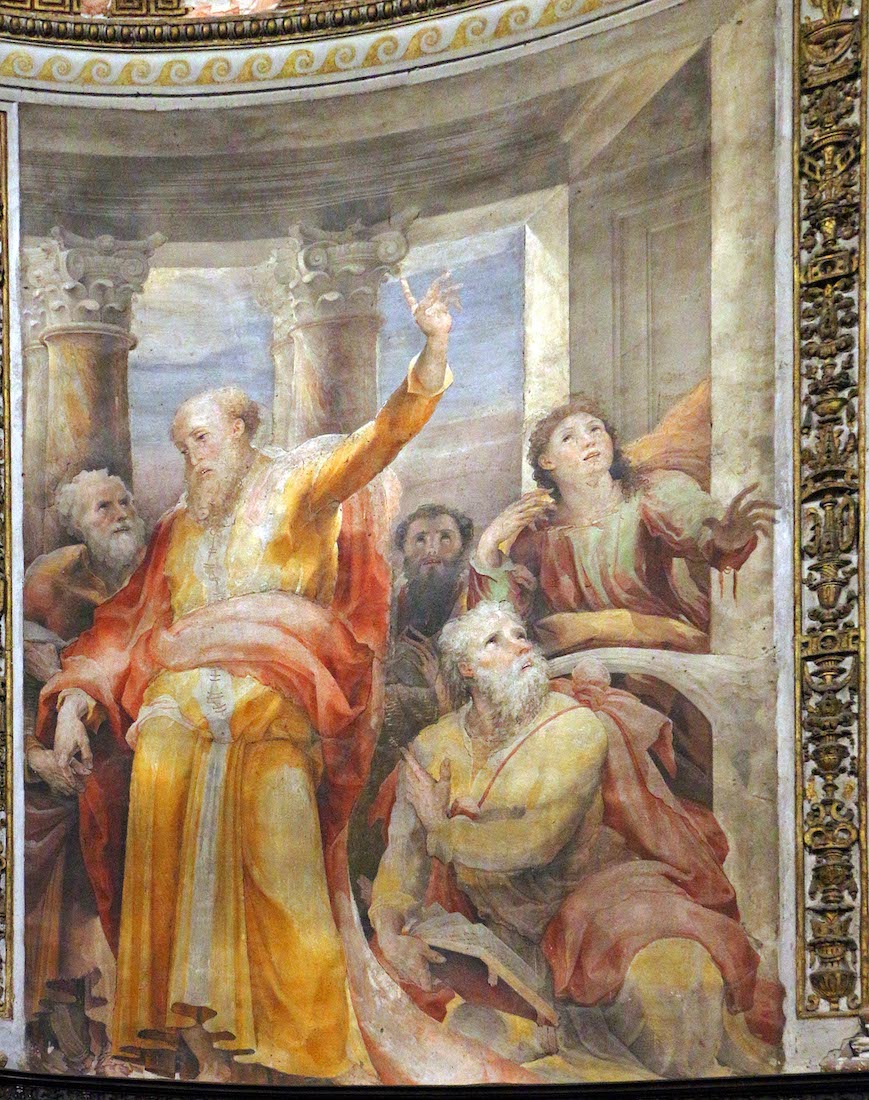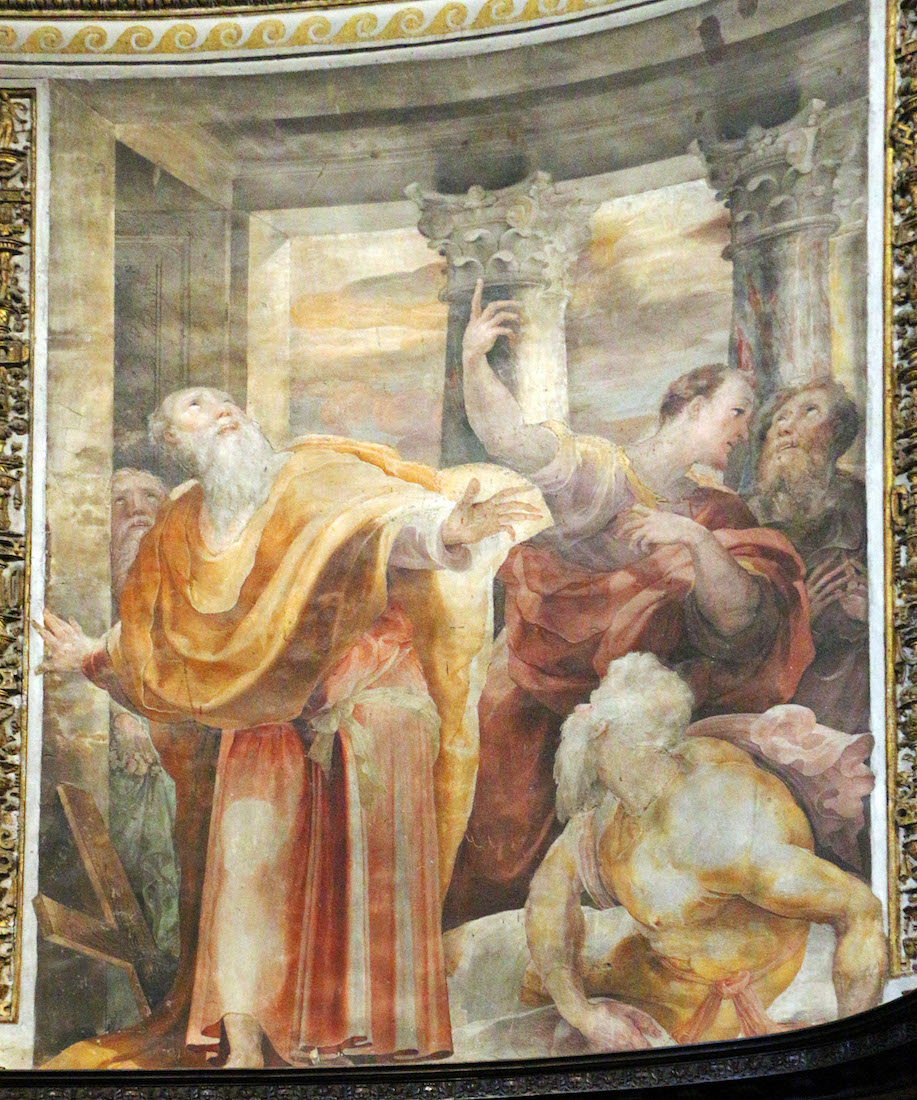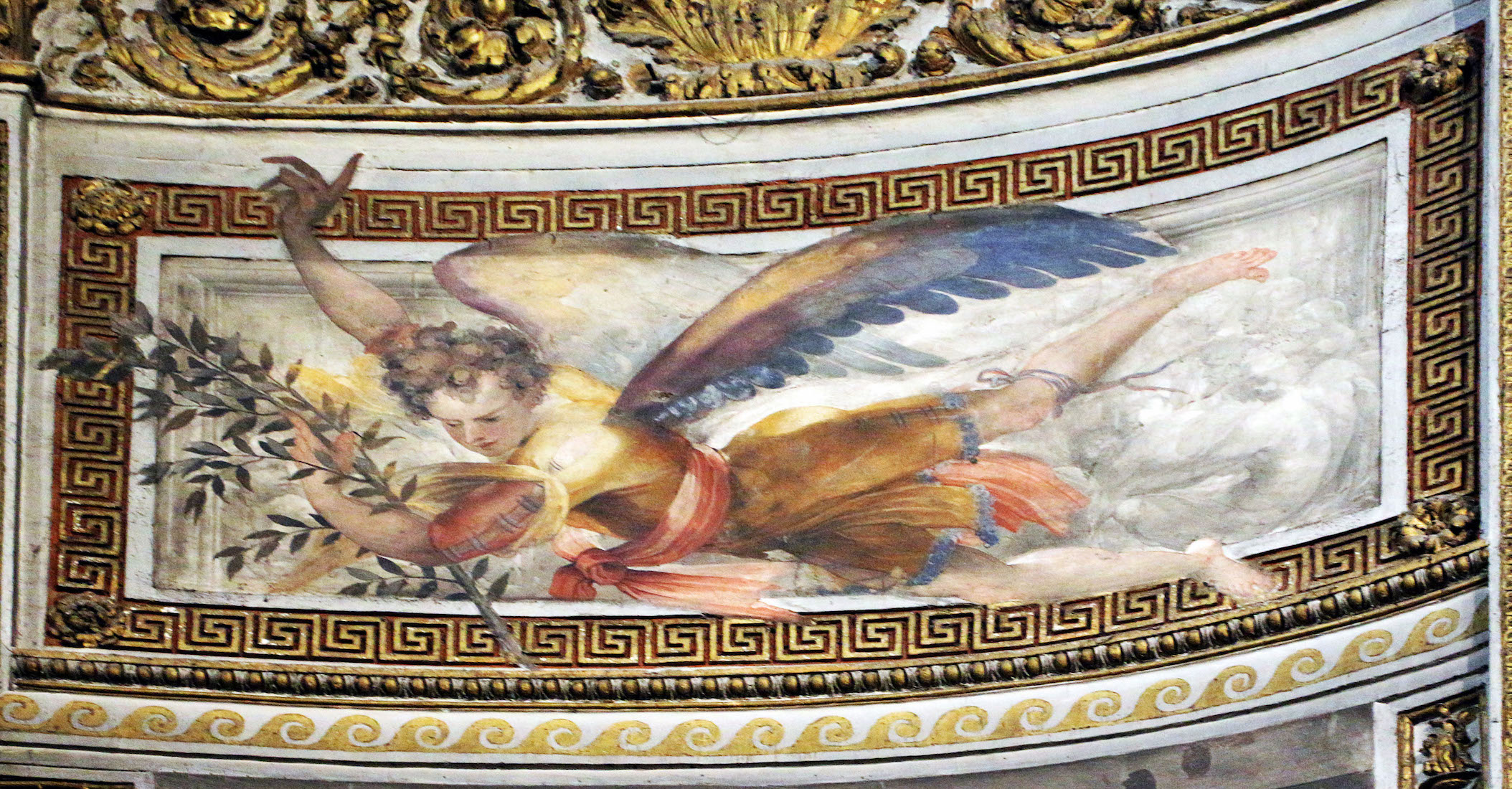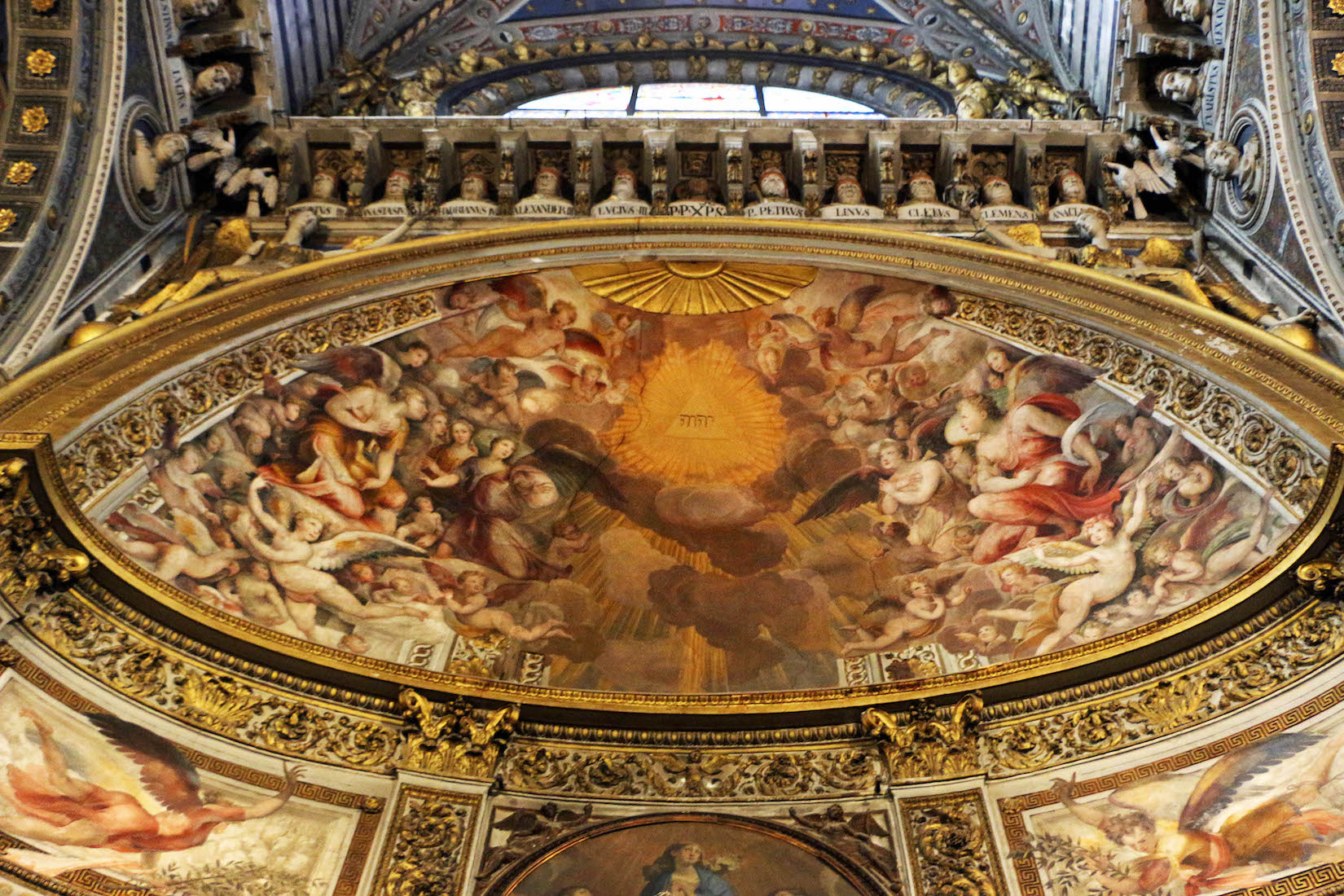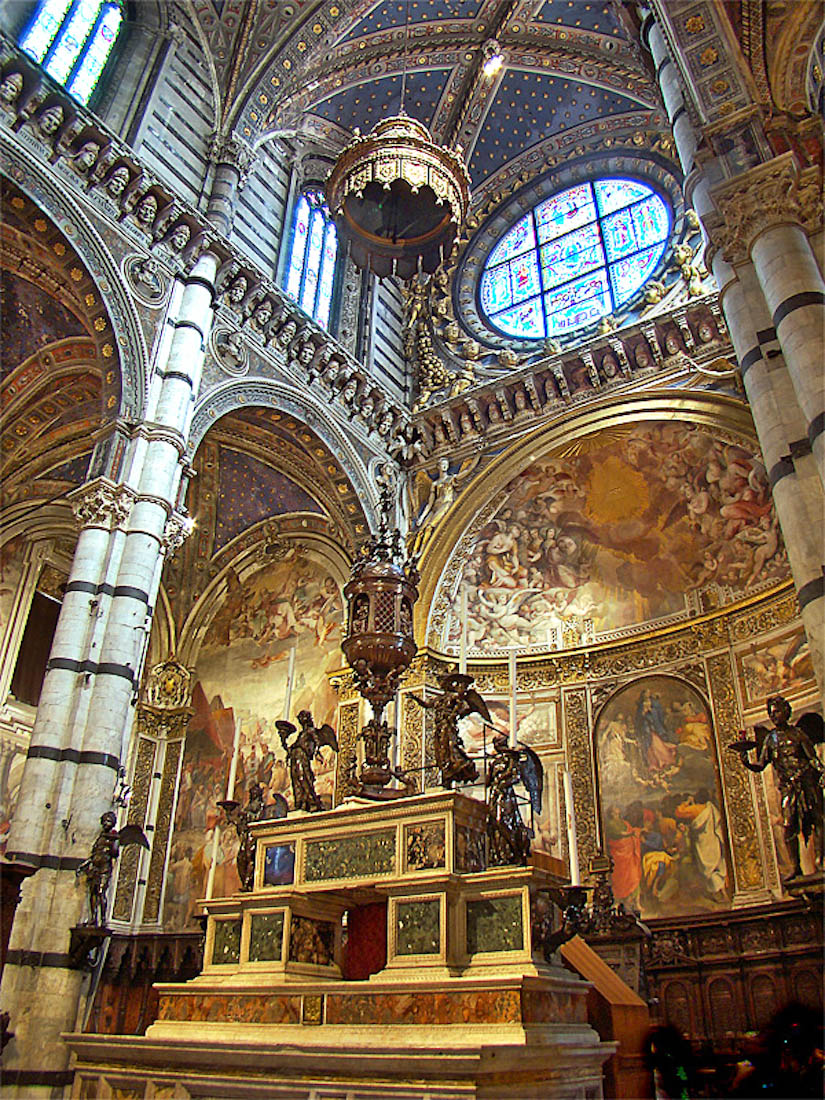E1. MONUMENT AND TOMBSTONE FB FB
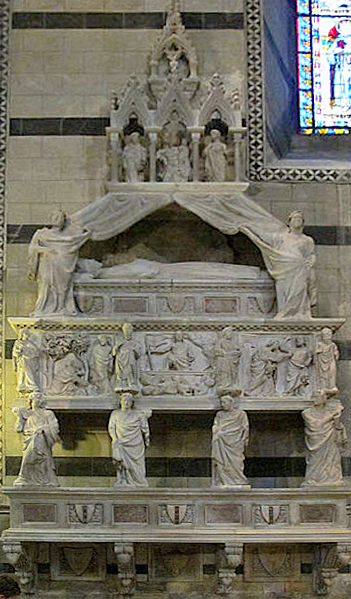
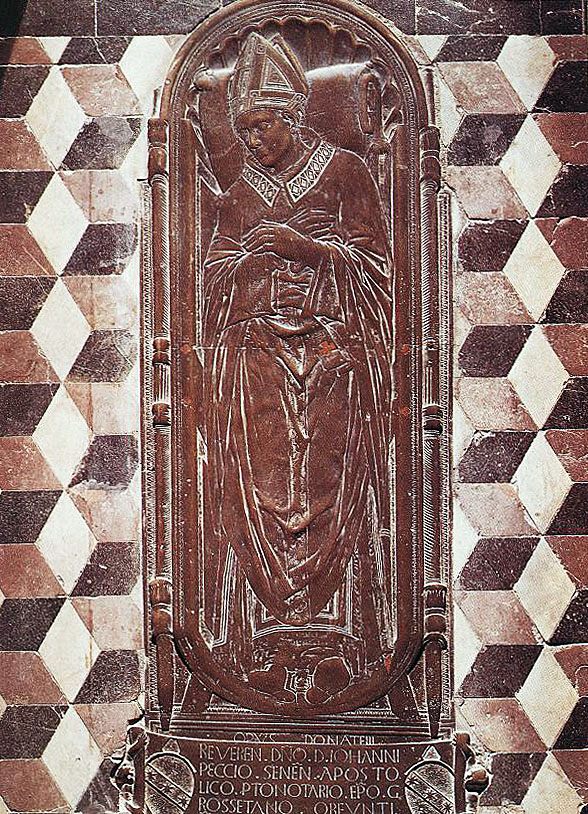
Between the North transept and the sanctuary there is a small square extension housing a monument and an altar. The monument at the side is a funerary memorial to Cardinal Riccardo Petroni (1250 – 1314). Petroni was born in Siena and became a senior cardinal in the Roman Catholic Church. At the base of the monument is the tombstone of Bishop Giovanni Pecci – the work of Donatello (1386–1466). INDEX
E2. WINDOW AND ST ANSANUS ALTAR FB JLBR
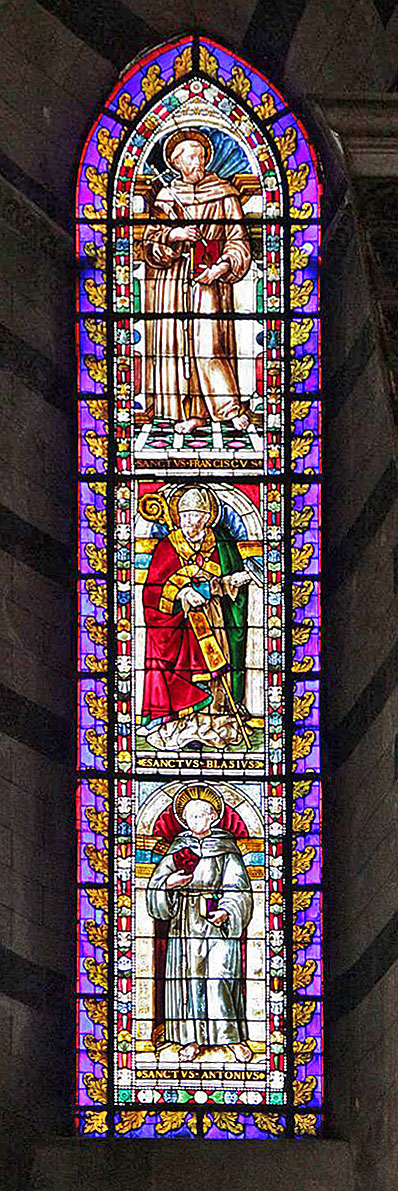
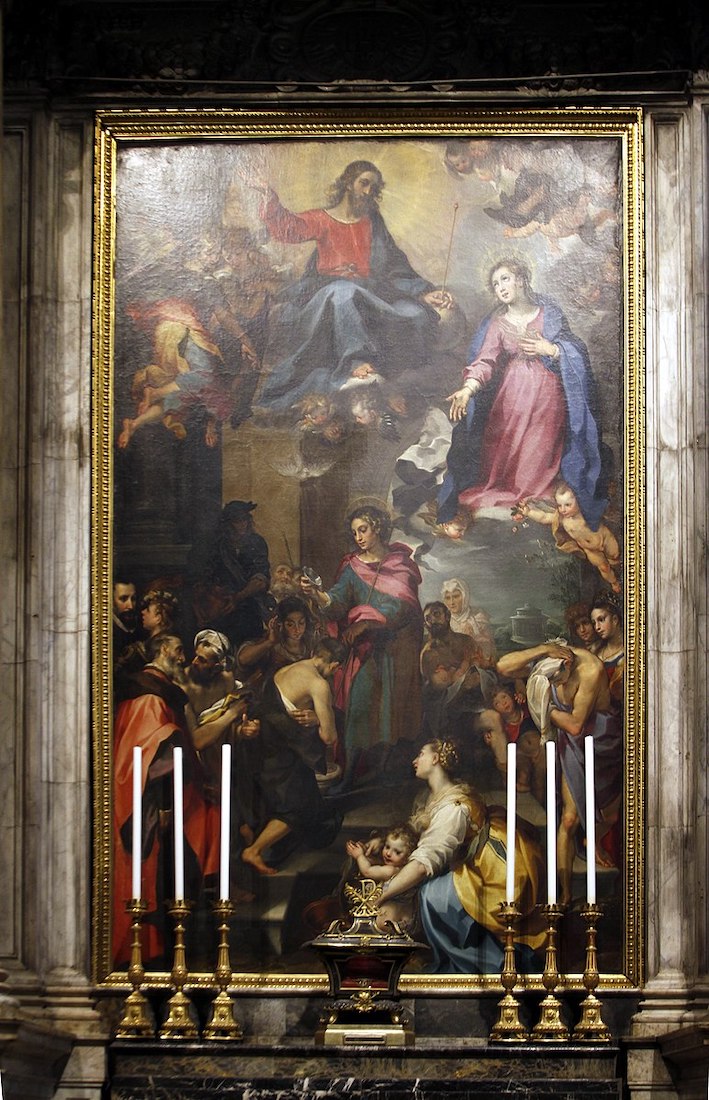
Just to the right of the Petroni monument is a slender stained glass window – one of the few stained glass windows in this Cathedral. Three saints are pictured here: St Francis, St Blasius, and St Anthony. The altar on the East wall is dedicated to St Ansanus, traditionally said to have been the evangelizer of Siena in the mid-3rd century. The altarpiece of St Ansanus Baptizing the Sienese is by Francesco Vanni (1593-6), and a reliquary of one of the Saint’s bones sits on the altar.
E3. ALTAR OF THE NATIVITY RB RB
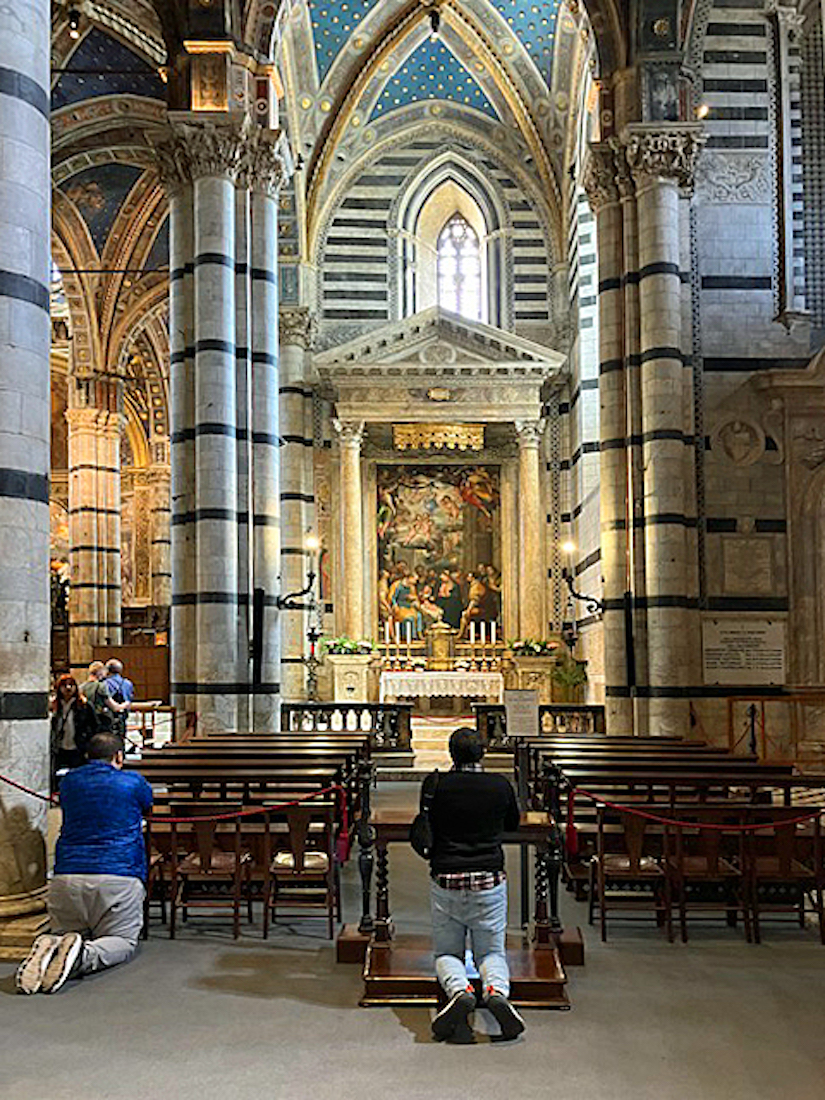
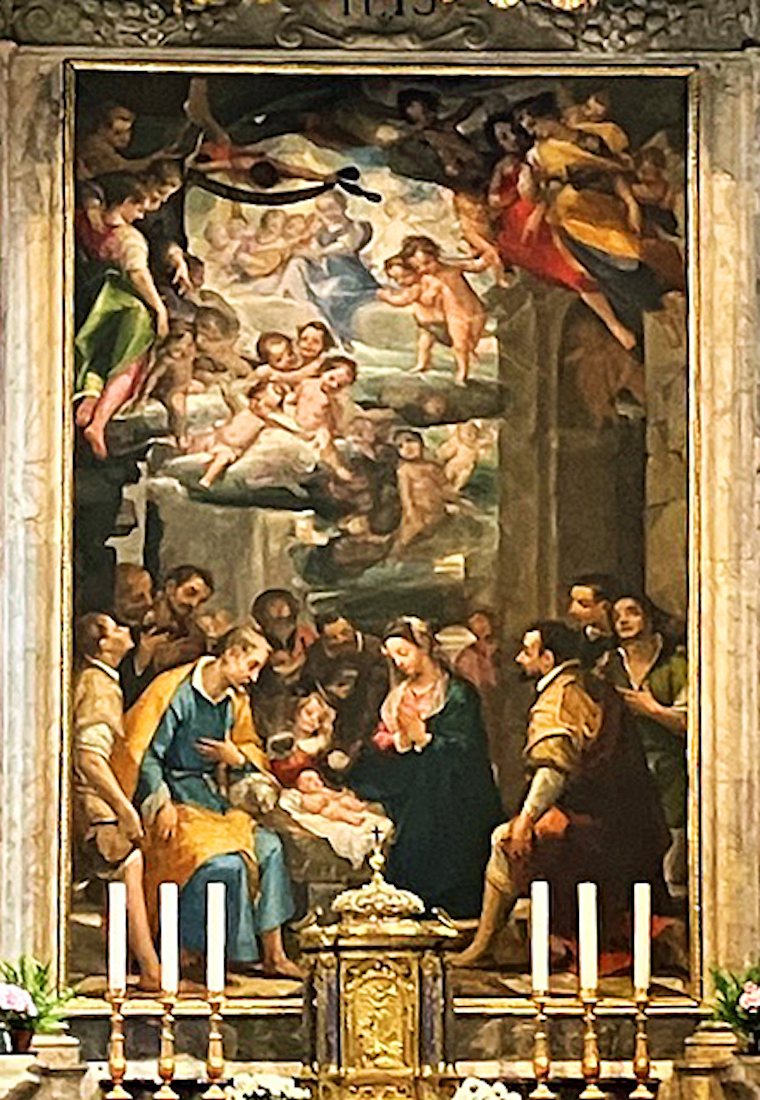
On the South side of the Cathedral there is a matching space which contains the Altar of the Nativity. The painting is ‘The Adoration of the Shepherds’ by Alexandro Casolani (1594). [Photo Credits: Ruth Butler (Private Source)]
E4. NORTH PIPE ORGAN WC JLBR
As we move into the short presbytery / chancel area leading to the high altar we come to one of two further pipe organs. This one is on the North side, just around the corner from the St Ansanus painting. It is distinguishable by the many extending trumpet pipes extending. This organ was built in 1966, partly by reusing pieces of earlier ones, by a firm called Tamburini, which built almost 1000 others up and down the Italian peninsula between 1893 and 1996. [Photo1 Credit: Gryffindor]
E5. SOUTH PIPE ORGAN WC JLBR
There is another pipe organ, just opposite, on the South side of the chancel. Unfortunately, this wonderful instrument hardly rates a mention in the literature about Siena Cathedral. [Photo1 Credit: JoanBanjo]
E6. APPROACHING THE SANCTUARY LM
We approach the sanctuary, resplendent in all its glory! So much to see ... . Two altars, the large rear marble altar with its own set of black angels. Decorated choir stalls on either side. The large black tabernacle above the altar, and a large cathedra to the left. An amazing set of colourful frescoes all round. An array of onlookers, looking down from on high. And above, a starry ceiling, sanctuary lamp, and round East window.
E7. TABERNACLE JLBR
The tabernacle mounted on top of the high altar is the work of the Sienese sculptor and painter Lorenzo di Pietro (1410-80), generally known by the peculiarly unfortunate nickname ‘Vecchietta’, which means ‘little old lady’. (The reason for this is completely unknown.) It was originally commissioned for the church of the Annunciation, the chapel of the very large pilgrim hospice in front of the cathedral, and executed from 1467-72. The work was extremely well-regarded; Vecchietta was paid a gigantic sum for it, and also given the workshop in which he had made it.
E8. A CLOSER VIEW LM
As we move closer, ity is worth taking time to appreciate some of the details. Like the gold decoration on the front of the altar, the intricate gold capitals at the tops of the columns with the chalices above, the angel on either side of the arch, ... .
E9. NORTH CHOIR STALLS JLBR
There are choir stalls on both sides. Only 36 of the wooden choir stalls remain from the original 90, dating from 1363 to 1397. Behind the stalls are highly decorative inlaid panels by renowned wood carver Fra Giovanni da Verona, from 1503. The inlays were originally made for an abbey, but they were so beautiful that the archbishop of Siena ordered them to be moved to the Cathedral in 1813.
E10. LOOKING TO THE NORTHEAST CORNER LM
We look to the Northeast corner where there are two large frescoes rising above the choir stalls..
E11. TWO FRESCOES FB JLBR
These apse frescoes were painted by various 16th and 17th century artists. Unfortunately, some were poorly repaired in the 19th century. The painting at right is ‘The Fall of Manna’ by Ventura Salimbeni (1610).
E12. ACROSS THE ALTAR TO THE SOUTHEAST CORNER WC
With so much to see, it is hard to remain focussed! [Photo Credit: Michal Osmenda]
E13. SOUTHEAST FRESCOES LM FB
On this side too we have large frescoes above the choir stalls. The fresco at right features St Catherine of Siena.
E14. HIGH ALTAR FB JLBR
The marble high altar of the presbytery was built in 1532 by Baldassarre Peruzzi. The four bronze angels, two by Giovanni di Stefano (1444-1511) and two by Francesco di Giorgio Martini (1439-1501), both natives of Siena, were originally commissioned in 1488 for the altar which this one replaced. Behind the high altar is a highly decorated lectern? It is difficult to see what practical use might be made of this.
E15. FRESCOES OF THE CENTRAL APSE FB FB
The arched alcove behind the altar contains its own array of frescoes.
E16. ANGELS FB FB
These include two swooping angels.
E17. WORSHIPPING HOSTS FB
And above, the heavenly hosts worship the glory of YAHWEH.
E18. ALTAR AND OCULUS WC
There is one further special painting directly behind the high altar, but hard to see. This is ‘Assumption of the Virgin’ by Bartolomeo Cesi (1594). We now look up to the oculus. [Photo Credit:Tango7174]
E19. EAST OCULUS DETAILS WC
Dating back to 1288, this stained glass window is among the oldest in all of Italy. It was crafted by Duccio di Buoninsegna, an outstanding painter of the era. The age and deterioration of this window had caused anxiety for some time. Finally, in 1996, this 18-foot-diameter window was carefully removed in a series of sections and taken across the piazza into another building to undergo a painstaking 3-year conservation project. Much of the leading that held the stained glass in place was not original and was in very poor shape. However, nearly all of the glass was determined to be original. The biggest challenge of the restoration was preserving the brownish grisaille paint that the artist used to paint the facial details of the figures. The central panel shows the Assumption, which is the church’s titular feast, with the Dormition of the Virgin below, and Her Coronation above it. To the left of the central panel are the Apostle Bartholomew, then much venerated in Siena as a protector of the city, and St Ansanus, its first evangelizer; to the right, the early local martyrs Crescentianus and Savinus; at the corners, the Four Evangelists. [Photo Credit: Supwerchilum]
This completes our visit to this main area of the Cathedral. We now look at the crypt, and the Baptistry of St John.



